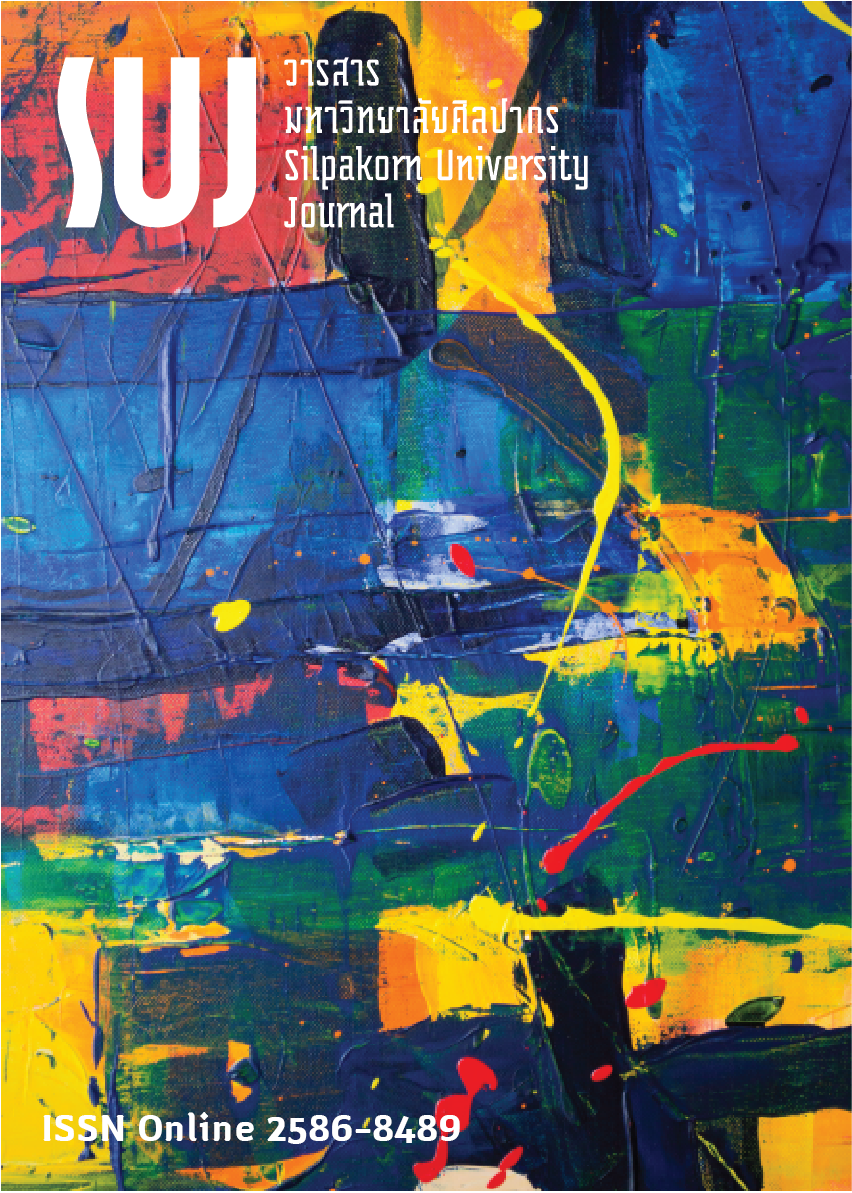คติการสร้างและการปฏิบัติต่อพระพุทธรูปในวัฒนธรรมล้านนา (The method of carving the Buddha image and its treatment in Lanna culture)
Main Article Content
Abstract
การปฏิบัติต่อพระพุทธรูปในวัฒนธรรมล้านนา เป็นวัฒนธรรมที่ยึดโยงกับคติตามพุทธกิจของพระพุทธเจ้าในครั้งพุทธกาล แสดงพลวัตของพระพุทธศาสนาจากการตีความตามคัมภีร์พระไตรปิฎกและคัมภีร์ทางพระพุทธศาสนาอื่นๆ มาสู่การปฏิบัติในชีวิตประจำวันที่มีความสัมพันธ์กับคน ธรรมชาติ และสิ่งมีอำนาจเหนือธรรมชาติ คนล้านนานับถือพระพุทธศาสนาแบบเถรวาท แต่ก็ไม่ใช่เถรวาทบริสุทธิ์ หากแต่เป็นเถรวาทที่ปรับตัวเข้ากับบริบททางสังคมที่ผสมกับคติแบบพราหมณ์และคติความเชื่อท้องถิ่น จึงทำให้พระพุทธรูปได้รับการปฏิบัติด้วยความเคารพ เชื่อมั่น และยำเกรง ในสถานภาพอันศักดิ์สิทธิ์ บทความนี้ จะนำเสนอคติการสร้าง และแนวปฏิบัติต่อพระพุทธรูปในวัฒนธรรมล้านนา 7 ประการ ได้แก่ 1) การสร้างอาคารสถานที่ประดิษฐาน 2) การล้างพระพักตร์ แปรงพระทนต์ และเช็ดพระพักตร์ 3) การถวายข้าว 4) การถวายเครื่องห่ม 5) การถวายเตียงบรรทมและเครื่องราชกกุธภัณฑ์ 6) ถวายสิ่งของ 7) พิธีขอขมา รวมทั้งข้อห้ามเกี่ยวกับพระพุทธรูปบางประการ
The treatment of Buddha images in Lanna culture is closely linked to the Buddha’s daily routine, which signified the dynamic of the Buddhist hermeneutical features based on the Tipitaka and other Buddhist texts. The treatment leads to daily practice that is related to the natural and the supernatural. Lanna people believe in the Theravada Buddhist tradition, which has been adapted to the Brahmanism and indigenous tradition. Thus, the Buddha image is treated with respect, reverence, and trust, having a divine status. This article presents the principles and treatments of the Buddha image in Lanna culture in 7 aspects: 1) the building of the Buddha image, 2) face cleaning, teeth brushing and face washing of the Buddha image, 3) food offering, 4) robe offering, 5) bed and royal regalia offering, 6) necessities offering and 7) the pardon ritual. This paper also discusses prohibitions associated with the Buddha image.
Downloads
Article Details
References
Anatole, R. P. (2014). Ânisaüsa: of Tai Ethnic Group in Mekong and Salween Region (อานิสงส์กลุ่มชาติพันธุ์ไทในภูมิภาคลุ่มแม่น้ำโขงและสาละวิน). Chiang Mai: Graduate School Chiang Mai Rajabhat University.
Chaotaikhuen, Chuen. Interview, November 28, 2016.
Chetthapattanavanich, Komnet. (2001). Khued: Prohibition in Lan Na (ขึด : ข้อห้ามในล้านนา).(3rd ed.) Chiang Mai: Institute for Social Research Chiang Mai University.
Dissakul, Subhadaradit. (1991). Indian Arts (ศิลปะอินเดีย). Bangkok: Kurusapa Business Organization.
Hongsuwan, Pathom. (2011). History and myths of the Buddha images in relationship to the social structure and beliefs of the local communities in Northern Thailand (ตำนานพระพุทธรูปล้านนา: พลังปัญญาทางความเชื่อและความสัมพันธ์กับท้องถิ่น). Bangkok: Thailand Research Fund (TRF).
Jangyod, Saangkham. Interview, August 22, 2016.
Ketprom, Silao. Interview, December 11, 2016.
Mahachulalongkornrajavidyalaya. (1996). Thai Tipitaka Mahachulalongkornrajavidyalaya Edition (พระไตรปิฎกภาษาไทย ฉบับมหาจุฬาลงกรณราชวิทยาลัย). Bangkok: Mahachulalongkornrajavidyalaya Publishing House.
Mahamakut Buddhist College. (1991). Tipitaka and Commentaries, Set of 91 Books (พระไตรปิฎกและอรรถกถาแปล ชุด 91 เล่ม). Bangkok: Mahamakut Buddhist College Printing House.
Na Nakorn, Prasert., & Tuikheaw, Puangkham. (1994). The Religious Legendary of Chiang Mai and Chiang Tung (ตำนานมูลศาสนาเชียงใหม่และเชียงตุง). Bangkok: Sak Sopa Printing.
Prangwattanakul, Songsak. (2008). Textile Heritage of Tai Lue (มรดกวัฒนธรรมผ้าทอไทลื้อ). Chiang Mai: Department of Thai, Faculty of Humanities, Chiang Mai University.
Prince Damrong Rajanubhab. (1970). The Legend Of Buddha Cetiya. Bangkok: Rung Wattana Printing House.
Theerawat, Naruemon., et al. (2008). Looking Myanmar through the Shwedagon (มองพม่า
ผ่านชเวดากอง). Chiang Mai: Silkworm.
Valipodom, Srisak. (1994). Amulets in Siam (พระเครื่องในเมืองสยาม). Bangkok: Matichon.
Wichienkheiw, Aroonrat. (2001). Buddha Images in Lan Na (พระพุทธรูปในล้านนา). Chiang Mai: Tawan Nue Printing House.


